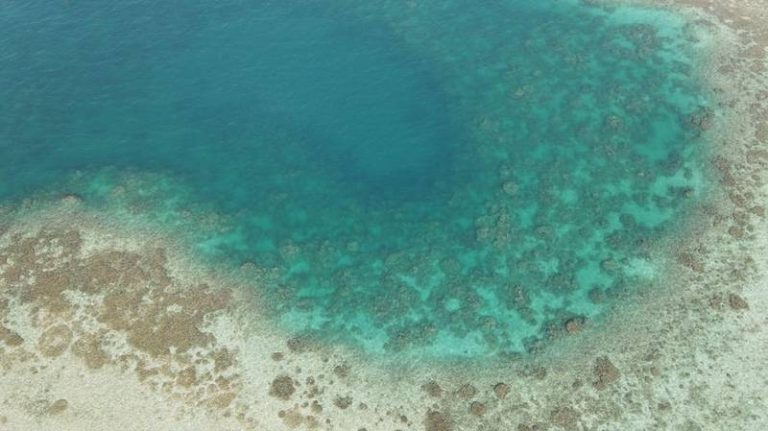The underwater sinkhole is home to grouper, jackfish and corals
The Environment Agency – Abu Dhabi has monitored a rare ‘blue hole’ in the waters of Al Dhafra region. The underwater sinkhole is about 12 meters deep, 200 meters wide and has an area of 45,000 square metres. The EAD said this is a “recent discovery in a routine inspection”. The blue hole is being monitored as part of the regular survey.
It provides a unique habitat for fish such as grouper, sweetlips, emperor fish and jackfish, and holds at least 10 types of coral species. The EAD said it was significant because it “provides a glimpse of how historic reefs used to look in Abu Dhabi”.
An environmental assessment survey of the unique ecosystem will be conducted to learn more about its geographical composition. This will involve mapping the area and analysing seawater. Topographic and scientific surveys will also be conducted by EAD.
There are similar blue holes around the globe. The deepest blue hole, the Yongle, lies in the South China Sea and reaches 300 metres beneath the seabed. Other famous blue holes include the “Great Blue Hole” in Belize; “Gozo’s Blue Hole” in Malta; the one at Dahab in Egypt and “Dean’s Blue Hole” in the Bahamas.
Divers from around the world are attracted to these unique structures which are home to fringe reefs and diverse fish species. Also at such depths they host diverse microbial communities.
During the Ice Age when sea levels were low, sinkholes of this type were usually formed in limestone rock. Over time, the water eroded the stone and left an opening where water rushed into as the sea levels climbed.


0 Comments